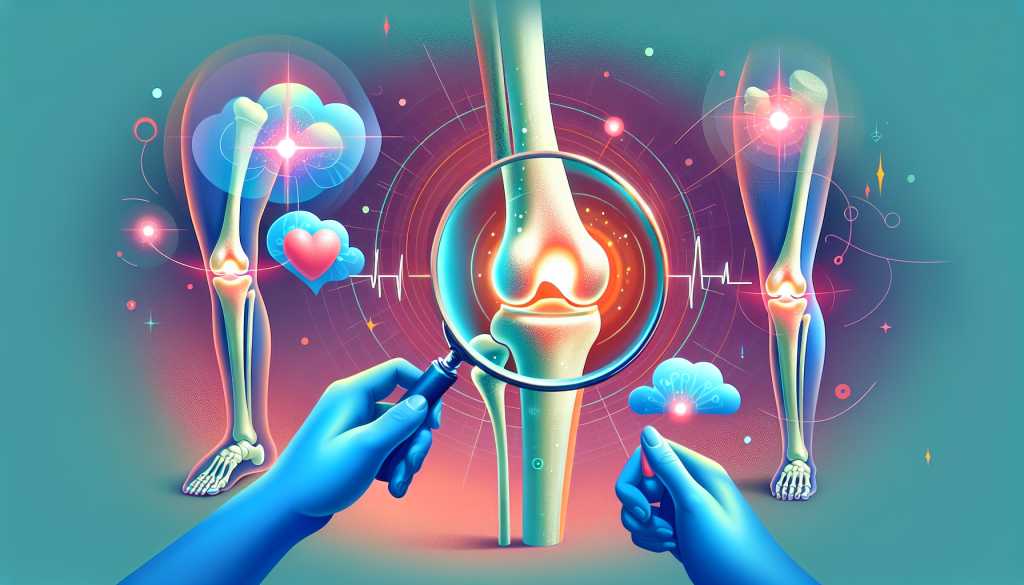
Silent Signals: What Your Joints Are Trying to Tell You
Have you ever experienced a sudden twinge in your knee or a sharp pain in your shoulder that seemingly came out of nowhere? Our joints are an integral part of our daily movements, but how often do we stop and listen to what they are trying to tell us? These silent signals from our joints could be an indication of underlying issues that require attention. In this article, we will uncover the mysteries behind our joint pains and reveal what our joints are trying to tell us.
Understanding Joint Pain
Joint pain is a common complaint, affecting millions of people worldwide. It can range from mild discomfort to severe, debilitating pain that can significantly impact our daily lives. What many of us fail to realize is that pain, stiffness, and discomfort in our joints are our body’s way of communicating with us.
Our joints are made up of bones, muscles, cartilage, ligaments, and tendons, all working together to enable smooth movement. When one or more of these components are not functioning correctly, it can cause pain and discomfort. Understanding the root cause of joint pain can help us decipher the message our joints are trying to convey.
Listening to Your Joints
We often ignore our joint pains, assuming they are a result of our busy and active lifestyles. However, persistent or worsening pain in our joints could be an indication of a more severe condition. Here are some common silent signals our joints may be trying to tell us:
1. Osteoarthritis
Osteoarthritis is the most prevalent form of arthritis, affecting millions of people worldwide. It is a degenerative joint disease that causes the breakdown of cartilage, the cushioning tissue between our bones. As the condition progresses, bones can rub against each other, leading to pain, stiffness, and loss of movement in the affected joint. If you experience joint pain that worsens with activity and improves with rest, it could be a sign of osteoarthritis.
2. Inflammation
Inflammation is our body’s natural response to injury or infection, but when it becomes chronic, it can lead to joint pain and other health issues. Inflammation in our joints can indicate conditions such as rheumatoid arthritis, lupus, or gout. These conditions can cause swelling, stiffness, and redness in the joints, making them tender to the touch. If you notice any signs of inflammation in your joints, it could be a silent signal of an underlying health issue.
3. Overuse
Our joints endure a lot of stress due to our day-to-day activities. Overuse can cause wear and tear on the joints, leading to pain and discomfort. It is essential to listen to our bodies and give our joints the rest they need. Ignoring pain and overworking our joints can lead to more severe conditions down the line.
4. Injury
Joint pain can also be a result of an injury, such as a sprain, strain, or fracture. The pain may not be immediate, especially with fractures, and can develop gradually over time. If you experience joint pain after an injury, it is crucial to seek medical attention to prevent further damage.
Taking Action for Healthy Joints
Our joints play a vital role in our overall well-being, and taking care of them is crucial for our daily activities. Here are some steps you can take to promote healthy joints:
1. Stay Active
Regular exercise helps to keep our joints moving and maintains their flexibility. Low-impact activities like swimming, walking, and yoga can help strengthen the muscles surrounding our joints, reducing the risk of injury and pain.
2. Maintain a Healthy Weight
Being overweight can put excess strain on our joints, leading to pain and discomfort. Maintaining a healthy weight can help reduce the stress on our joints and prevent conditions such as osteoarthritis.
3. Eat a Nutrient-Rich Diet
Eating a balanced diet rich in vitamins and minerals can help prevent conditions that cause joint pain. Foods such as fish, nuts, and leafy greens contain anti-inflammatory properties that can help reduce joint pain and swelling.
Our joints are always communicating with us, and it is essential to listen to their silent signals. Ignoring joint pain can lead to more severe conditions, affecting our daily lives. By understanding the root cause of our joint pains and taking appropriate action, we can keep our joints healthy and continue to move with ease.
Remember, prevention is always better than cure, and your joints will thank you for taking care of them!
